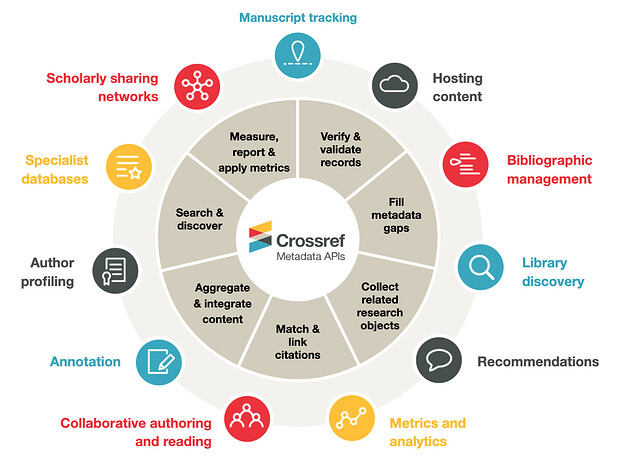We get frequent questions about who is using the metadata members register with us. Many of those are specific to another product, tool, or organization.
For instance, a popular question is:
when will my metadata available in Google or Google Scholar?
We usually answer those questions by explaining that we don’t have a formal relationship with Google, so registering your content with Crossref doesn’t necessarily guarantee inclusion in Google or Google Scholar. We’ll remind our members that anywhere from 24 to 48 hours after successful registration, your metadata records will be available in our APIs and search interface, which are widely used throughout the scholarly community.
We’ll also explain that we do find that Crossref DOIs and metadata are indexed by Google’s crawlers and appear in search engine results but since their approach isn’t public, we don’t have any insight into their processes or timelines unfortunately.
We’ll conclude by reminding the member/user that our REST API is open to all, and that many other organizations and services use Crossref metadata.
But, the story is bigger than Google and that explanation isn’t as extensive as it could be, so I thought I’d respond here to the larger question about: who uses your metadata (and, why don’t you know more about that)?
The basics
Crossref members register content with us to let the world know it exists. They send us information called metadata which we collect and store in a standard way. Metadata does not include the full-text of the content itself, but just information about that content. The metadata includes a Digital Object Identifier (DOI) in each record, which links to the content even if it moves to a new website. We make this metadata openly available via our APIs, which means people and machines can incorporate it into their research tools and services.
From there
Manuscript tracking services, search services, bibliographic management software, library systems, author profiling tools, specialist subject databases, scholarly sharing networks - all of these (and more) incorporate scholarly metadata into their software and services. They use our free APIs to help them get the most complete, up-to-date set of metadata from all of our publisher members. And of course, members themselves are able to use our free APIs too.
It’s important to us that our metadata is made freely and openly available. As you can see from the diagram, we know there are many organizations across the globe that make use of Crossref metadata, but we deliberately don’t force them to have a formal relationship with us.
Other sources of metadata
We’re often one of multiple sources that users get their metadata from, but we know that our metadata is an important source for the scholarly community. We highlighted several different examples of organizations that use our metadata in our API case study blog series.
Many databases and indexes use Crossref metadata as part of their process and include having your content registered with Crossref as one of their inclusion criteria. However, most have other inclusion criteria too, so just registering your content with Crossref is no guarantee they’ll use any particular records. We also have no control over how often these organizations index our content. It’s always best to confirm with the organization themselves what their criteria is and how often they pull in Crossref metadata.
Thanks for reading,
Isaac
